Prediction and validation of the structural features of Ov58GPCR, an immunogenic determinant of Onchocerca volvulus
- PMID: 30256790
- PMCID: PMC6157839
- DOI: 10.1371/journal.pone.0202915
Prediction and validation of the structural features of Ov58GPCR, an immunogenic determinant of Onchocerca volvulus
Abstract
Onchocerciasis is a severely debilitating yet neglected tropical disease (NTD) that creates social stigma, generates and perpetuates poverty, and leads ultimately in some cases to irreversible unilateral or bilateral blindness if untreated. Consequently, the disease is a major impediment to socioeconomic development. Many control programs have been launched for the disease with moderate successes achieved. This mitigated hit is partially due to the lingering need for reliable, non-invasive and easily applicable tools for mapping endemic regions and post-elimination surveillance. In this work, bioinformatics analyses combined with immunological assays were applied in a bid to develop potential tools for diagnosis and assessing the success of drug treatment programs. We report that (i) the O. volvulus antigen, Ov58GPCR is a G-protein coupled receptor (GPCR) conserved in related nematodes, (ii) synthetic peptides predicted to be in the extracellular domain (ECD) of Ov58GPCR are indeed immunogenic epitopes in actively-infected individuals, (iii) synthetic peptide cocktails discriminate between actively-infected individuals, treated individuals and healthy African controls, (iv) polyclonal antibodies against one of the peptides or against the bacterially-expressed ECD reacted specifically with the native antigen of O. volvulus total and surface extracts, (v) Ov58GPCR is transcribed in both larvae and adult parasite stages, (vi) IgG and IgE responses to the recombinant ECD decline with ivermectin treatment. All these findings suggest that the extracellular domain and synthetic peptides of Ov58GPCR, as well as the specific immune response generated could be harnessed in the context of disease diagnosis and surveillance.
Conflict of interest statement
The authors have declared that no competing interests exist.
Figures
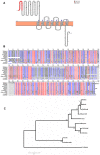
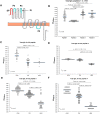
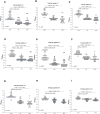

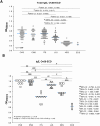
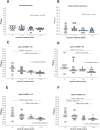
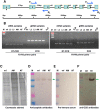
Similar articles
-
The diverse expression of immunity in humans at distinct states of Onchocerca volvulus infection.Immunology. 1997 Apr;90(4):592-9. doi: 10.1046/j.1365-2567.1997.00210.x. Immunology. 1997. PMID: 9176114 Free PMC article.
-
Onchocerca volvulus-specific antibody and cytokine responses in onchocerciasis patients after 16 years of repeated ivermectin therapy.Clin Exp Immunol. 2007 Mar;147(3):504-12. doi: 10.1111/j.1365-2249.2006.03312.x. Clin Exp Immunol. 2007. PMID: 17302900 Free PMC article.
-
The effect of ivermectin treatment on the antibody response to antigens of Onchocerca volvulus.Trans R Soc Trop Med Hyg. 1994 Jul-Aug;88(4):456-60. doi: 10.1016/0035-9203(94)90433-2. Trans R Soc Trop Med Hyg. 1994. PMID: 7570844 Clinical Trial.
-
Recent updates on onchocerciasis: diagnosis and treatment.Clin Infect Dis. 2007 Jan 1;44(1):53-60. doi: 10.1086/509325. Epub 2006 Nov 29. Clin Infect Dis. 2007. PMID: 17143815 Review.
-
Assessment and monitoring of onchocerciasis in Latin America.Adv Parasitol. 2011;77:175-226. doi: 10.1016/B978-0-12-391429-3.00008-3. Adv Parasitol. 2011. PMID: 22137585 Review.
Cited by
-
The Functional Parasitic Worm Secretome: Mapping the Place of Onchocerca volvulus Excretory Secretory Products.Pathogens. 2020 Nov 23;9(11):975. doi: 10.3390/pathogens9110975. Pathogens. 2020. PMID: 33238479 Free PMC article. Review.
-
Beyond Tradition: Exploring Cutting-Edge Approaches for Accurate Diagnosis of Human Filariasis.Pathogens. 2024 May 24;13(6):447. doi: 10.3390/pathogens13060447. Pathogens. 2024. PMID: 38921745 Free PMC article. Review.
-
Identification and characterization of the Onchocerca volvulus Excretory Secretory Product Ov28CRP, a putative GM2 activator protein.PLoS Negl Trop Dis. 2019 Jul 22;13(7):e0007591. doi: 10.1371/journal.pntd.0007591. eCollection 2019 Jul. PLoS Negl Trop Dis. 2019. PMID: 31329585 Free PMC article.
-
Computational Design and Preliminary Serological Analysis of a Novel Multi-Epitope Vaccine Candidate against Onchocerciasis and Related Filarial Diseases.Pathogens. 2021 Jan 21;10(2):99. doi: 10.3390/pathogens10020099. Pathogens. 2021. PMID: 33494344 Free PMC article.
-
In Silico Design and Validation of OvMANE1, a Chimeric Antigen for Human Onchocerciasis Diagnosis.Pathogens. 2020 Jun 22;9(6):495. doi: 10.3390/pathogens9060495. Pathogens. 2020. PMID: 32580355 Free PMC article.
References
-
- Tekle AH, Zouré HGM, Noma M, Boussinesq M, Coffeng LE, et al. (2016) Progress towards onchocerciasis elimination in the participating countries of the African Programme for Onchocerciasis Control: epidemiological evaluation results. Infectious Diseases of Poverty 5: 66 10.1186/s40249-016-0160-7 - DOI - PMC - PubMed
Publication types
MeSH terms
Substances
LinkOut - more resources
Full Text Sources
Other Literature Sources

